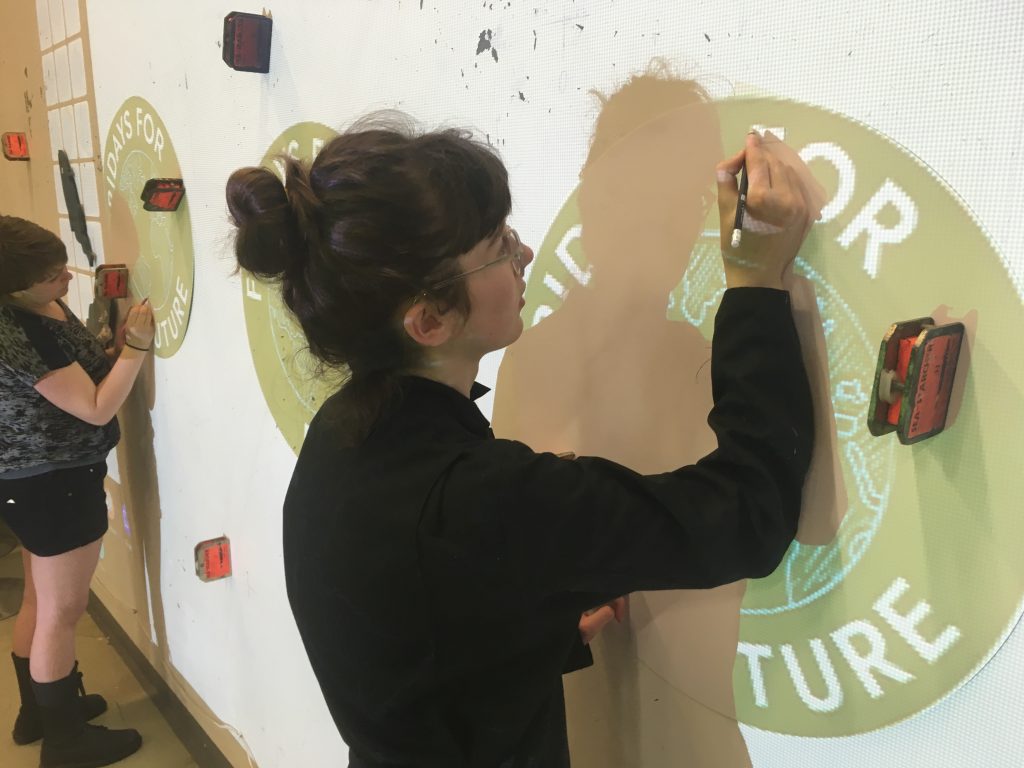
WELCOME!
When a small part of the population is really engaged for change, change occurs.
Erica Chenoweth’s research shows that non-violent civil disobedience is the most successful way to bring about change.
Here is all you need to get started.
Your Action
Getting Started
Talk to people you know (family, friends) and try to get them to understand how serious the situation is.
Start small. You can strike on your own, but it is often more fun and more productive to get some friends together. Decide on a time and place to strike and invite members of local climate justice groups and environmental groups. The more people the better!
Register your strike on this webpage here.
Have fun creating signs, banners, costumes, and other bold visuals. The more striking your art, the more media coverage you may get. Let your creativity shine!
Remember when you compose your messages to speak for yourself and not others. Why do YOU care about climate change? What action do YOU want to see?
Let the local media know when and where you will be striking (see below: “Amplify your message”).
Share the word on social media. The more people who see your strike in person, through the media, or on social media, the better.
Invite prominent local people to strike with you (and let the media know they are coming!) Many older people would be flattered to be invited to strike with you.
After the strike, celebrate! Thank those who joined you. Make the experience rewarding and fun. And when it is all done…start thinking about the next event!
Amplify the Message
Check out the “contact” pages on the websites of newspapers and TV stations in your area. Send them an announcement of the time and place of your strike, letting them know there will be signs and banners that will make great photos. During the strike, consider taking a few photos and sending them to media outlets. On social media, ask friends with many followers to boost your message. Don’t be shy! This is important work.
Don’t forget to share your achievements on social media by hashtagging #FridaysForFuture and #ClimateStrike. We need you! It is together that we will make a difference.
Get permission?
Many of our strikes have been approved by the police. If you’re organizing a strike, you might want to check if you need police approval. Often these approvals only allow for a quiet, sitting protest. Check the laws in your area if you want to use any amplified noises like music or loudspeakers for speeches. This may require a permit as well.
Fridays For Future is unlikely to be able to provide legal support should problems occur, so if they do, we would advise liaising with NGOs in your area who know local lawyers, well versed in protest situations.
Choosing Where and When to Strike
You’re welcome to follow Greta’s lead and strike in front of your closest town hall, city hall or other local government building every Friday from 8.00-15.00, including holidays.
Many weekly strikes are shorter and start at noon.
Striking in front of a publicly owned building and in the same place and time each week makes it easier for others to join.
Alternatives to physical strikes
Many people are unable to strike in person. They might not want to miss school or work, or it is not safe for them to do so, or they may have disabilities that make it difficult or impossible to sit or stand outside for long periods. However, there are many alternative possibilities.
Striking indoors with a sign and hashtag on social media (like #FridaysForFuture; #Climatestrikeonline, #Digitalstrike) totally counts – so have fun and get creative! Write and perform a climate strike song! The possibilities are endless.
You can also sign petitions in Actions and communicate them on social media.
Learning more about the climate crisis is also important, and turning knowledge into lists of things you and your family will do.
Fridays For Future Strike Culture
- No violence
- No property damage
- No littering
- No profit
- No hate
- Minimize your carbon footprint
- Always refer to science
Stay safe
Fridays For Future only want you to strike in a way that you feel safe and comfortable with. We are a peaceful organization, but we have seen cases of counter protestors, so please take care to prioritize your safety.
In most places, striking is safe. If you are concerned, you are welcome to email working group ARZ, ActivismRiskZone, email for support and advice.
Use #ARZ_helps if a minor human rights violation occurs and you would like to raise awareness.
Strikers at risk can use anonymous style emails if you would like to be contactable from the map, e.g. FFF_happystriker@gmail.com.
Printable Resources
Download the Fridays For Future – you can find it in Resources & Materials.
Strikers can use our logo freely. You can even add your strike’s location to the logo, and if you need any assistance, please use the German ToolPic Generator. As a last resort, you can email us, but it may take some time to get a response.
The FFF logo may not be used for commercial purposes or by political parties.
School striking
Skipping School
It is up to you whether you go to school that day and walk out, or skip for the day. We suggest you talk to your principal and teachers ahead of time and ask them to support you. Bring accurate scientific information to these meetings to let them know you are serious and well informed. Many are very sympathetic and encouraging.
You could even ask to put up posters in your school.
In-school alternatives
If you decide you cannot skip school, you can still get your school talking about the climate emergency. Here are some ideas.
- Drop-off strike. On Fridays, strike in front of your school during morning drop-off at a visible location. Your school may or may not allow climate striking on school grounds.
- Silent strike. On Fridays, do not speak for all or part of the day. Maybe use a portable whiteboard to carry your message, writing something like “Climate Silent Strike.”
- Lunch strike. On Fridays, #SchoolStrike during lunch time.
- Ribbon strike. Wear a green or blue ribbon proudly and prominently. Green for forest planet, blue for ocean planet, or maybe both.
- Promise for Future. This pledge can be signed by anyone. It can be used to engage students, teachers, parents, principals, elected officials etc. in a conversation.
Remember to register your strike with us.
How Teachers can help
If you are a teacher who supports #FridaysforFuture, consider joining or starting a social media group for teachers and consider these additional ways to help:
- Discuss the climate crisis in your classroom. No matter what subject you teach, there is a way to connect it to the global crisis.
- Educate your peers. Compile resources for or make a presentation to teachers to educate them on the climate crisis so they don’t spread misinformation.
- Ask permission to bring your classes to the major strikes that happen a few times per year or let them #Climatestrikeonline every Friday.
- Organize a school assembly in which the climate crisis is discussed. This could feature the climate strikers themselves, a teacher, or an outside speaker or panel of speakers, such as climate scientists or experienced local activists.
- Build a coalition within the school (of teachers, administrators, etc.) to create a formal, public declaration of climate emergency.
Letter to Head teacher
Sample for your editing
beyond striking
If you’d like to go beyond striking, you can use your power to start demanding specific changes in your community.

